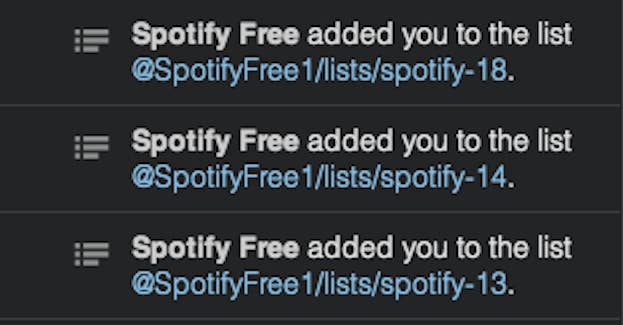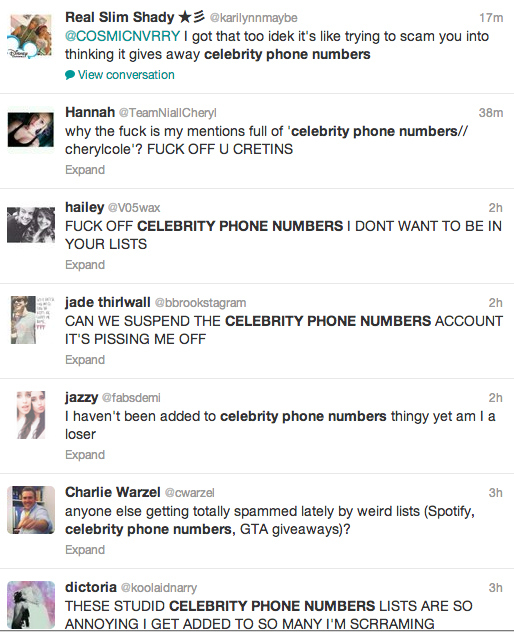
If you're a regular Twitter user, you've probably noticed some weird additions to your Connect tab: lists. Weird lists. Tantalizing lists! Lists with names like "Justin Bieber Phone Number." This, improbably, is the cutting edge of Twitter spam.
Last May, in a nod to its power users, Twitter announced it would upgrade its list feature. It would allow for up to 1,000 lists per user, with the option of adding 5,000 accounts to each list (up from 20 lists per user and 500 accounts per list). The expansion was met with open arms by Twitter's obsessive news gatherers, power users, and brand managers — people who don't so much use Twitter as monitor it. Add to that list spammers, who find the higher limits quite useful.
Sigh - new Twitter spam method: adding to lists.

Graeme Foster
@GraemeF
Sigh - new Twitter spam method: adding to lists.
Spammy list additions are by no means new to Twitter — reports of Twitter list spam appear to have surfaced as early as 2009. But this new iteration is both weirder and more pervasive.
The sly trick of this style of Twitter spam is that it doesn't involve tweeting, and therefore doesn't feel quite so obnoxious; robot or not, the accounts are still following you, which users are conditioned to feel good about.
One of the most prolific offenders, for example, an account by the name of Celeb Phone Numbers, has created, at the time of this writing, 95 lists, each with somewhere between 2,000–5,000 accounts per list. While there's likely a good amount of repetition from list to list, there's enough variation to suggest that Celeb Phone Numbers has been able to reach, at the very least, tens of thousands of users through their Connect tabs. And, of course, their email inboxes.
One of the accounts, @CelebPhoneNo, is frustrating users with a particularly aggressive campaign.

For the spammers, lists also provide some protection from being quickly reported to Twitter. Most of the offending accounts have only tweeted once, and few, if any, follow other users, thus avoiding the telltale signs of more traditional, and prolific, spambots.

Websites linked to the spam accounts don't seem to be running any type of traditional banner ad campaigns, and it's unclear how they're making money. The websites are relatively new (Celeb Phone Numbers' domain was registered on Aug. 18, 2013, according to Whois). It's possible the accounts are in place simply to drive up domain prices with traffic or to accumulate Facebook likes and Twitter followers to market to later. For now, it feels more likely that this first wave of spam is a trial run designed to see what works — and which accounts are active and receptive.
As Twitter edges nearer to its first days of public trading, it will sell itself as a moneymaking platform for advertisers. And as Twitter's visibility and popularity grow, expect others to try to find a way to cash in. In other words, expect more spam.
